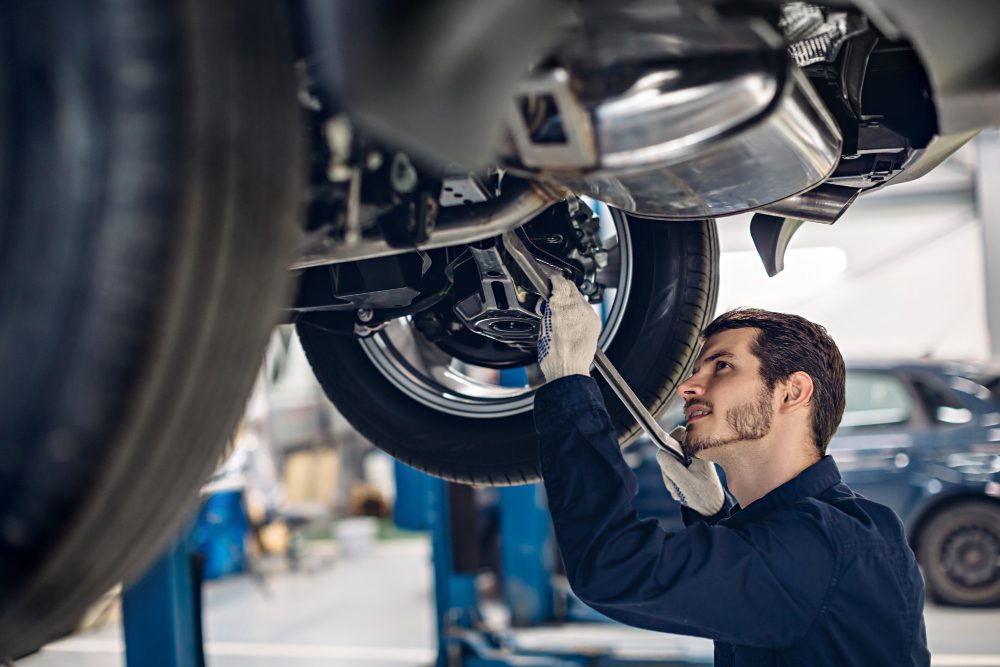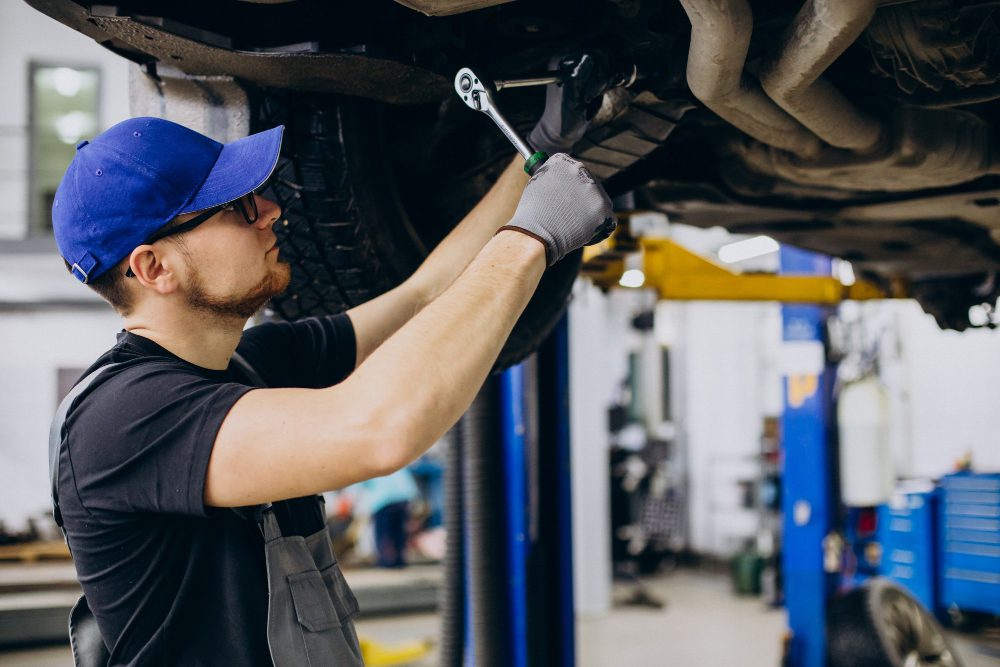Why do I feel every bump when driving?
Driving on bumpy roads can be an uncomfortable experience, as every little bump seems to make its presence felt. But have you ever wondered why this happens? In this article, we will explore the reasons behind why you might feel every bump when driving and what you can do to minimize the impact.
The suspension system
One of the main reasons why you feel every bump when driving is due to your vehicle’s suspension system. The suspension system is designed to absorb shocks and vibrations from the road, providing a smoother and more comfortable ride. However, if the suspension components are worn out or not functioning properly, they may not be able to effectively cushion the bumps, leading to a jarring experience.
Tire pressure and condition
Another factor that influences how much you feel the bumps on the road is the condition and pressure of your vehicle’s tires. If your tires are underinflated or worn out, they are less able to absorb the impact of bumps, resulting in a rougher ride. It’s essential to regularly check your tire pressure and ensure that your tires are in good condition to help reduce the impact of bumps on the road.
Vehicle weight distribution
The distribution of weight in your vehicle can also play a role in how much you feel the bumps. If the weight in your vehicle is unevenly distributed, it can affect the suspension’s ability to absorb shocks. For example, if you carry heavy items in the trunk without properly securing them, it can lead to increased vibrations and a bumpier ride.
Road conditions
Of course, the condition of the road itself is a significant factor in how much you feel the bumps when driving. Roads with potholes, cracks, or uneven surfaces can result in a rougher ride, as your tires and suspension system have to work harder to navigate these obstacles. Construction zones or unpaved roads can also contribute to a bumpier driving experience.
What can you do?
While you may not have control over road conditions, there are steps you can take to minimize the impact of bumps when driving. Regular maintenance of your vehicle’s suspension system is crucial, including checking for worn-out components and ensuring proper alignment. Maintaining the correct tire pressure and replacing tires when necessary can also help improve your ride comfort.
In addition, consider driving at lower speeds when encountering bumpy roads to reduce the impact of bumps on your vehicle. It’s also advisable to avoid sudden movements or aggressive driving, as this can exacerbate the jarring effect. Finally, if you frequently drive on rough roads, you might want to consider investing in a vehicle with more advanced suspension technology, such as air suspension or adaptive damping, which can offer a smoother ride.
To sum up, feeling every bump when driving can be attributed to factors like the condition of your vehicle’s suspension system, tire pressure, weight distribution, and the state of the road itself. Taking proper care of your vehicle, driving responsibly, and considering alternative suspension technologies can help minimize the impact and provide a smoother driving experience.
Why does my car feel bouncy at low speeds?
Have you ever noticed that your car feels bouncy or unstable when driving at low speeds? This can be a common issue for many drivers, and there are several reasons why this may occur.
Tire Pressure
One of the most common causes of a bouncy ride is incorrect tire pressure. When your tires are over-inflated or under-inflated, it can affect how your car handles on the road. Make sure to regularly check your tire pressure and adjust it according to the manufacturer’s recommendations.
Suspension System
Your car’s suspension system plays a vital role in providing a smooth and comfortable ride. If any components of the suspension system are worn out or damaged, it can lead to a bouncy feeling. It is important to have your suspension system inspected by a professional mechanic to identify any issues.
Worn Shocks or Struts
Worn shocks or struts can also cause your car to feel bouncy, especially at low speeds. These components are responsible for absorbing the impact of bumps and uneven surfaces. If they are worn out, they may not effectively dampen the movement of your car, resulting in a bumpy ride.
Wheel Alignment
Poor wheel alignment can cause your car to pull to one side and feel bouncy. When your wheels are not properly aligned, it can affect the way your tires make contact with the road, leading to an uneven and unstable ride. Regular wheel alignments are essential for maintaining a smooth and comfortable driving experience.
Uneven Road Surfaces
While it is important to consider the condition of your car, it is also worth noting that uneven road surfaces can contribute to a bouncy ride. Potholes, speed bumps, and rough pavement can all cause your car to feel unstable, especially at low speeds.
If you are experiencing a consistently bouncy ride, it is recommended to have your car inspected by a professional mechanic. They will be able to diagnose any underlying issues and provide the necessary repairs or maintenance.
Remember, maintaining proper tire pressure, checking your suspension system, and addressing any worn-out components can help alleviate the bouncy feeling and ensure a smoother ride.
Why does my car feel wobbly at 70 mph?
Driving at high speeds can be an exhilarating experience, but it can also be unnerving when your car feels wobbly. There are several reasons why your car may exhibit this behavior at 70 mph.
Tire Issues
One common cause of car wobbling is tire issues. If your tires are unevenly worn or improperly inflated, it can result in an unstable ride. Make sure to check the tire pressure regularly and ensure that your tires are properly aligned and balanced.
Suspension Problems
Faulty suspension components can also contribute to a wobbly sensation. Worn-out shocks or struts may not effectively absorb bumps and vibrations, causing your car to feel unstable at higher speeds. It is recommended to have your suspension system inspected and serviced by a qualified mechanic.
Wheel Alignment
Incorrect wheel alignment can lead to a wobbly feeling while driving. When your wheels are not properly aligned, they may pull towards one side, resulting in an unsteady ride at higher speeds. Getting your wheels aligned by a professional can help eliminate this problem.
Brake Issues
Brake problems can cause a wobbling sensation, especially when braking at high speeds. Warped brake rotors or unevenly worn brake pads can lead to vibrations that affect the stability of your car. Regular brake inspections and maintenance can prevent such issues.
Other Factors
Other factors that may contribute to a wobbly feeling include worn-out ball joints, loose or damaged steering components, and even aerodynamic effects. It is important to address these issues promptly to ensure your safety on the road.
Remember, if you experience persistent wobbling at 70 mph or any other speed, it is crucial to have your car inspected by a professional mechanic to identify and resolve the underlying problem.
Additionally, practicing good driving habits such as maintaining a proper speed, avoiding sudden maneuvers, and ensuring regular vehicle maintenance can help prevent and mitigate wobbling issues.
Understanding the causes of car wobbling at 70 mph can go a long way in ensuring a safe and comfortable driving experience. By addressing tire, suspension, alignment, and brake issues, you can enjoy a smooth and stable ride even at higher speeds.



